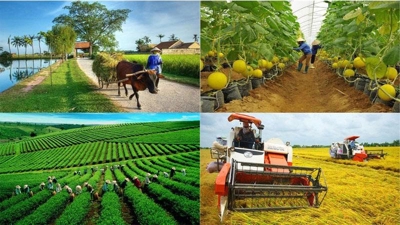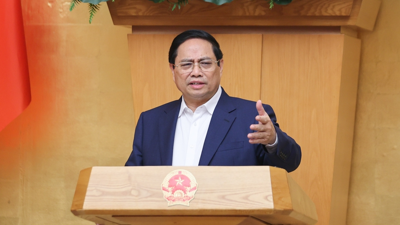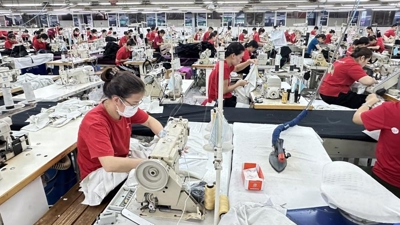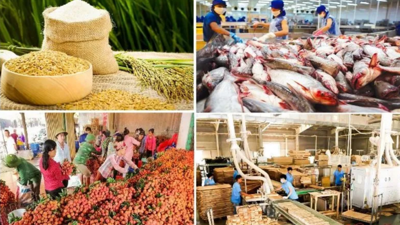How could Vietnam be among top 30 largest economies by 2030?
To achieve the goal, the country should expedite public investment, boost domestic demand and enhance its resilience to climate change, according to ADB Country Director for Vietnam.
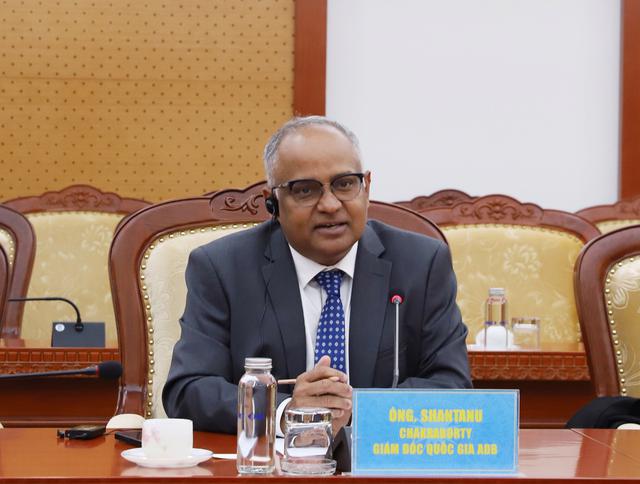
Vietnam should expedite public investment, boost domestic demand and enhance its resilience to climate change to achieve its goal to be among the world's top 30 largest economies by 2030, the Government News on September 26 quoted Country Director of the Asian Development Bank (ADB) for Vietnam Shantanu Chakraborty as suggesting.
According to the ADB Country Director, Vietnam itself has strong aspirations of becoming an upper middle income country by 2030 and a high income country by 2045 and it is all enshrined.
Vietnam is now the 34th largest economy in the world. Last year, its GDP size was estimated at $430 billion and GDP per capita increased by $160 year-on-year to $4,284.
Vietnam was ranked 12th out of 20 countries with the highest rate of economic growth over the past 10 years, according to Yahoo Finance. The country maintained an average real GDP growth rate of 6.1 per cent over the last decade.
Regarding public investment, it is identified as the primary catalyst for economic recovery and growth in 2024. The Government has asked for breakthrough solutions to fulfil the target of 95 per cent in the disbursement rate of public investment capital worth $27 billion in 2024.
"In term of public investment, it is necessary to strengthen infrastructure, which needs to be put in place to sustain the foreign direct investment (FDI) inflows," Mr. Shantanu Chakraborty said.
Meanwhile, domestic consumption is one among three drivers for growth and Vietnam should not rely too much on exports, according to Mr. Shantanu Chakraborty.
Total final consumption demand accounts for over 70 per cent of the Vietnamese economy's GDP. Total retail sales reached an estimated VND4.148 quadrillion (nearly $180 billion) in the first eight months of 2024, representing an 8.5 per cent year-over-year increase.
The third thing for Vietnam to be able to leapfrog into the high-end economy is to address concerns about climate change because the nation is the fifth or sixth largest economy in terms of vulnerability to climate change, suggested the ADB Country Director.
Any aspiration to leapfrog into the top 30 economies can only be done through creation of resilient economic base, and creation of resilient infrastructure that will withstand any impact of climate finance, he remarked.
"Typhoon Yagi has just swept through and we can expect similar hazards going forward. That is the way climate change is impacting the whole world. It is very important to make ourselves resilient to such shocks. This is a key building stone if Vietnam is to leapfrog into the top 30 economies in the world," Shantanu Chakraborty said.
In the last 10-15 years, Vietnam has seen unprecedented economic growth. It is a very commendable progress, he noted, adding that it is given by various advantages, including political stability and prudent monetary policy, a skilled and economically cheap labor force, and strong foreign direct investment (FDI) flows.
As of 2024, Vietnam's labor force stands at 52.4 million people, with 27.8 per cent holding degrees or certificates, according to Mr. Shantanu Chakraborty.
Vietnam's abundant labor force and competitive labor costs make it a prime destination for manufacturing and software outsourcing in Southeast Asia, he remarked.
Post-COVID-19, the country is rapidly recovering, evidenced by a 34.9 percent drop in unemployment rates, he added.
The workforce is adaptable to new technologies, bolstered by young Vietnamese returning with international education, he remarked.
"Vietnam's young labor force is relatively cheaper compared to the rest of the world. Besides, the China Plus One strategy has definitely benefited Vietnam,” Mr. Shantanu Chakraborty said.
Advantages help Vietnam become the strongest "magnet" to attract FDI in Southeast Asia. The total registered FDI in the country reached over $20.52 billion [in the first eight months of this year], representing a 7 per cent year-on-year increase while the realized capital for FDI projects was estimated at $14.15 billion, up 8 per cent.
To remain as an attractive destination for foreign investors, the ADB Country Director suggested Vietnam enhance linkages between the domestic manufacturing sector and the FDI-driven manufacturing sector, promote the development in emerging areas such as Artificial Intelligence (AI) and semiconductors as well as improve logistic service and infrastructures.


